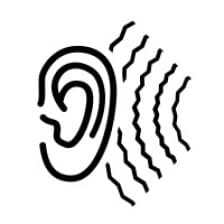How to Control Hearing Loss in the Workplace
Noise Induced Hearing Loss (NIHL) is a big issue in New Zealand workplaces. Problems are not limited to big factories—staff and self-employed workers in small companies and farms are also regularly exposed to excessive noise.

The 2015 Health and Safety at Work Act says average workplace noise levels must stay below 85dB(A) and peaks must be lower than 140dB.
In fact, even 85dB isn’t totally safe. This figure is taken from an American study which sets 85dB as a maximum Recommended Exposure Limit (REL) and concluded that at this level of noise exposure over a lifetime of work, 8% of workers will suffer hearing loss.
How loud is 85db? Approximately, it’s about as loud as city traffic. The commonly quoted rule of thumb is that you are having to raise your voice to speak to someone a meter away, noise levels are higher than 85dB. WorkSafe NZ suggests these questions to see if hearing is at risk:
- At work, do you have to shout to make yourself understood by somebody about an arm’s length away?
- Do you get ringing or buzzing in your ears after work, or after particular jobs at work?
- Does your family say you have difficulty hearing them when you get home?
- Do you have to turn up the volume on the TV or radio after a day at work?
- Do you often have to ask people to repeat things they’ve just said?
If your answer to any of these is ‘yes’, chances are that workplace noise could be putting hearing at risk.
If workers are in environments where the eight-hour average exposure is over 85dB or the peak noise level goes to 140 dB or over, persons conducting a business or undertaking (called PCBUs by the 2015 Health and Safety at Work Act) need to put a noise management plan in place.
Recommended ways to manage noise, from best to worst, are:
- Keep noise levels below 85dB(A) on average and 140dB at peak.
- If possible replace machinery that creates noise above these levels.
- If you can’t replace the machinery reduce exposure to it.
- Wear hearing protection (earmuffs, earplugs) if noise levels are still too high.
When noise levels could exceed the legal limits, a PCBU should designate the area as a hearing protector area with appropriate signage. Every person in a designated hearing protector area must wear hearing protectors.
A noise management plan also includes measuring noise levels in the workplace every 5 years, or sooner if plant and equipment is purchased or modified, periodic medical surveillance exams and providing suitable hearing protection.
Compliance with the Approved Code of Practice for the Management of Noise levels in the Workplace now requires considerable industry knowledge and specialised test equipment. Because of this, an increasing number of workplaces will employ a professional HS consultant to assess workplace noise and provide regular audiometric testing of employees.
Esko offers a variety of hearing protection in the form of reusable and disposable earplugs, earmuffs and replacement earpads. Our hearing protection is suitable for noise levels up to 120 decibels. For more information about Esko’s range and hearing protection in New Zealand check out our hearing protection resource page or WorkSafe NZ has a huge amount of information about employers’ legal responsibilities and best practice guidelines.
To find more about Esko’s hearing protection supplies, call 0800 500 470.